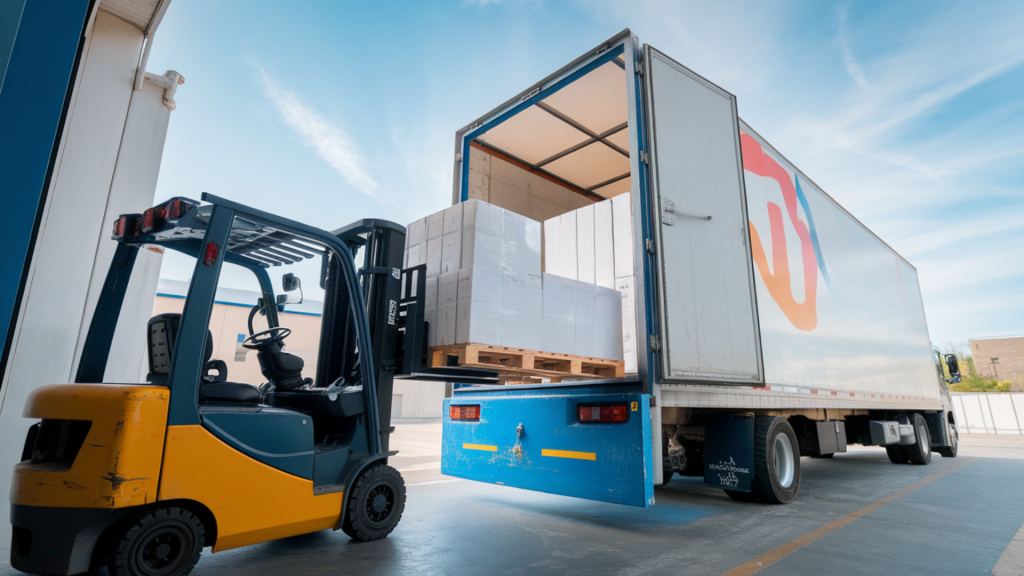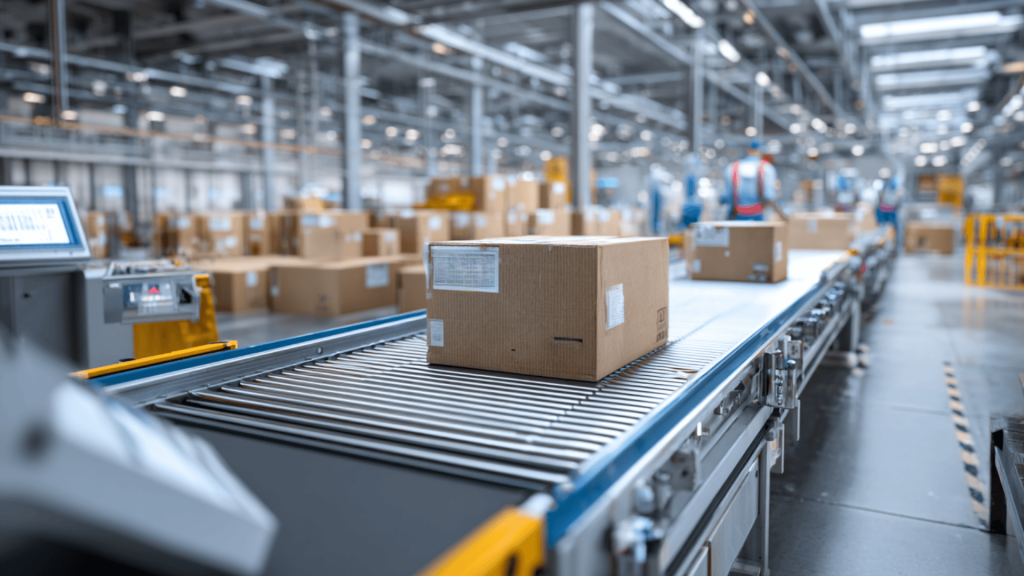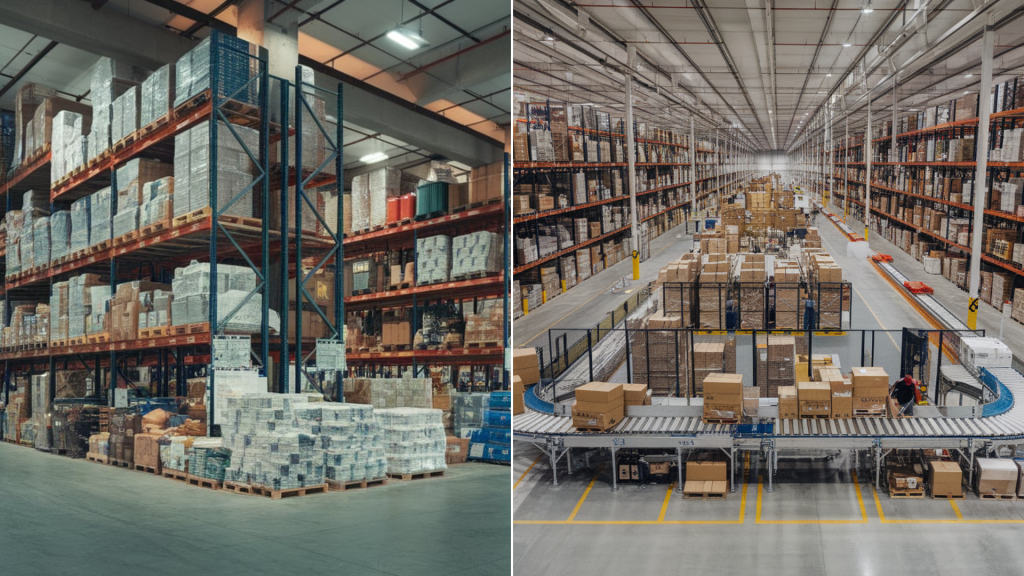When I first learned about cold chain logistics, it sounded technical, but the idea is actually pretty simple.
It’s about keeping products at the right temperature while they move through the supply chain.
This process is critical for things like food, medicine, and vaccines, where even a small temperature change can cause spoilage or make them unsafe.
Cold chain logistics uses refrigerated storage, special packaging, and careful monitoring to keep goods safe from the warehouse all the way to the customer.
In this guide, I’ll explain what cold chain logistics means, why it matters, and how businesses can manage it well with the right tools, planning, and best practices for temperature control.
What is Cold Chain Logistics?
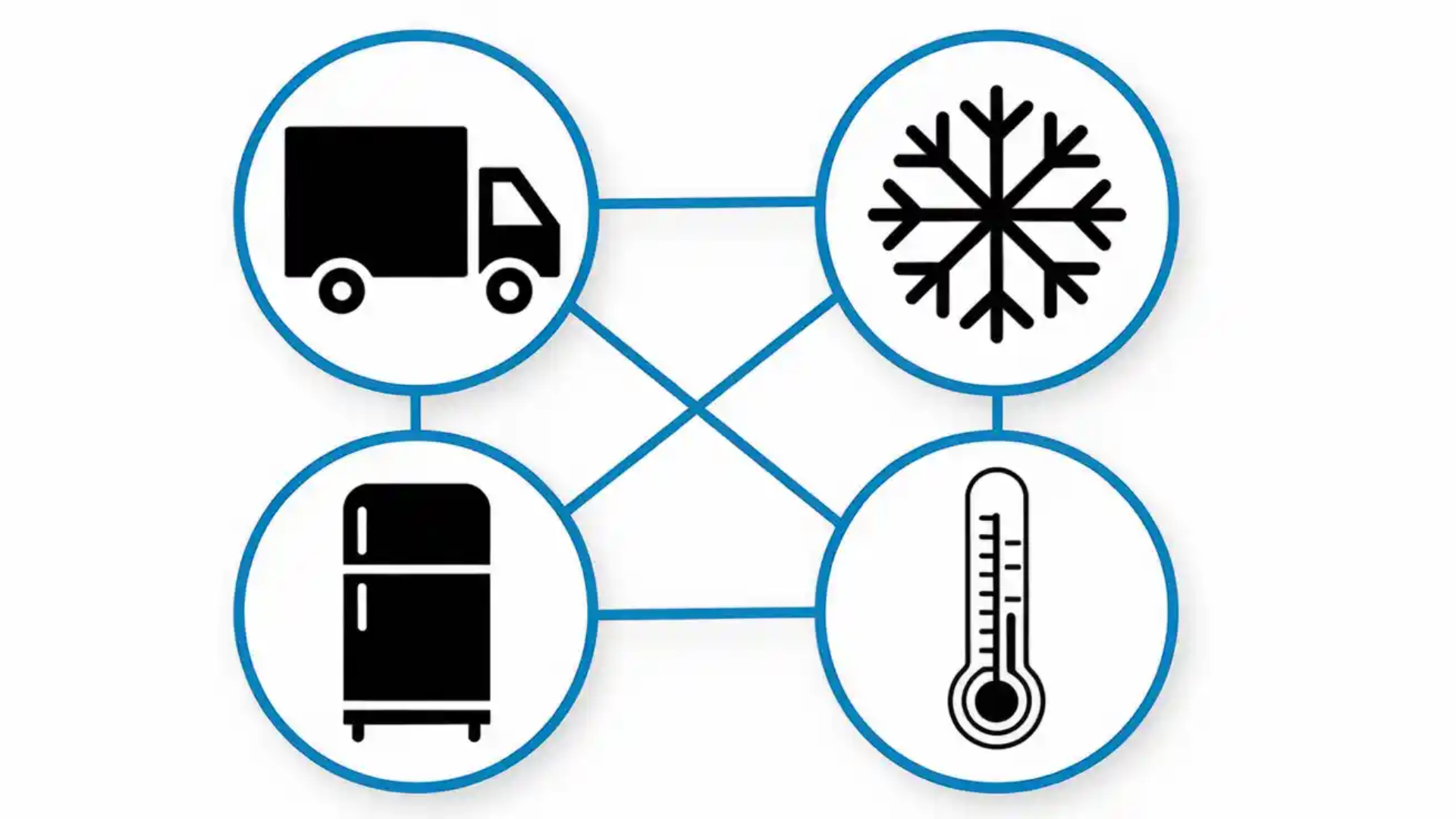
Cold chain logistics is the process of moving and storing products that need to stay within a set temperature range.
Instead of just shipping items normally, this system uses refrigerated trucks, cold storage facilities, and special packaging to keep goods safe.
It’s most often used for food, medicines, and vaccines, since these products can spoil or lose their effectiveness if temperatures go too high or too low.
Cold chain logistics is all about protecting quality and safety from the supplier to the customer, making sure products arrive fresh, effective, and ready to use
Cold Chain Logistics: Temperature Ranges & Product Classes
Different products need different temperature ranges to stay safe and effective. Cold chain logistics groups them into simple classes so they can be handled the right way during storage and transport.
- Controlled Room Temperature (15–25 °C / 59–77 °F): Many medicines and health products fall in this range.
- Refrigerated (2–8 °C / 36–46 °F): Common for vaccines, dairy, and fresh produce.
- Frozen (around –20 °C / –4 °F): Used for frozen foods, seafood, and some pharmaceutical items.
- Ultra-Cold (–70 °C / –94 °F and below): Needed for certain biologics, lab samples, or specialized vaccines.
By keeping goods within these ranges, cold chain logistics protects quality and prevents waste.
End-to-End Flow of Cold Chain
The cold chain is more than just refrigerated trucks – it’s a full process that protects products every step of the way. From storage to final delivery, each stage matters.
1. Cold Storage and Pre-Cooling
Products often start in cold storage facilities that keep them at the right temperature until transport. Pre-cooling is sometimes done to quickly bring items down to the correct range before they’re shipped.
This step is crucial for fresh produce, dairy, or vaccines, as even small delays can affect quality.
2. Temperature-Controlled Transport
Refrigerated trucks, containers, or even airplanes are used to keep goods in range during transit. These vehicles are equipped with cooling systems and sensors to monitor conditions.
Careful scheduling and fast transfers at cross-docks reduce the risk of exposure to outside temperatures.
3. Monitoring and Tracking
Modern cold chain logistics relies on sensors, data loggers, and tracking systems to confirm products stay within safe limits.
Alerts are sent if temperatures move out of range so that quick action can be taken. This helps reduce spoilage, builds trust, and ensures safety in industries like food and healthcare.
4. Last-Mile Delivery
The final leg is often the riskiest, as products move closer to customers. Small refrigerated vans, insulated boxes, or special packaging are used for short distances.
Keeping doors closed and reducing handling time are key. This stage ensures goods arrive safely, fresh, and ready to use at stores, hospitals, or homes.
Cold Chain Logistics: Industries & Use Cases
Cold chain logistics plays a big role in many industries where product safety and quality depend on temperature control. I’ve listed the main examples below:
| Industry | Products | Why Cold Chain Matters |
|---|---|---|
| Food & Beverage | Fresh produce, dairy, meat, seafood | Prevents spoilage, keeps food safe and high quality |
| Pharmaceuticals | Vaccines, biologics, insulin, medicines | Protects potency, ensures patient safety |
| Floral & Plants | Cut flowers, seedlings, nursery goods | Extends shelf life and reduces waste |
| Chemicals | Industrial chemicals, lab reagents | Maintains stability and prevents dangerous reactions |
| Cosmetics & Beauty | Skin creams, serums, organic ingredients | Preserves texture, color, and product effectiveness |
| Electronics | Batteries, chips, temperature-sensitive parts | Prevents overheating or damage during transport |
| Agriculture | Freshly harvested crops, seeds | Supports longer distribution and reduces post-harvest losses |
Cold chain logistics is essential wherever freshness, safety, or product stability must be guaranteed from start to finish.
Regulations and Compliance of Cold Chain Logistics
Cold chain logistics have strict rules to make sure products are safe and reliable. These regulations guide how goods are stored, moved, and delivered.
- Food Safety Modernization Act (FSMA – USA): Sets standards for handling perishable foods safely.
- Good Distribution Practice (GDP – Europe): Ensures medicines are stored and shipped under the right conditions.
- IATA Perishable Cargo Regulations: Provides rules for air shipments of food, flowers, and other perishables.
- World Health Organization (WHO) guidelines: Focus on vaccines and medical supplies that need tight temperature control.
By following these rules, companies keep their shipments safe, avoid fines, and build trust with customers around the world.
Cold Chain Logistics: Packaging Systems & Lane Design
Packaging is one of the most important parts of cold chain logistics. The right system protects products from temperature changes and keeps them safe throughout the journey.
Passive vs. Active Systems
Passivepackaging uses insulated boxes, phase change materials (PCM), or vacuum insulated panels (VIP) to keep goods cool without power. These are cost-friendly and work well for short trips.
Activesystems, like powered reefers or containers with built-in cooling, use electricity or batteries to maintain steady temperatures. They’re more expensive but better for long routes or high-risk shipments.
Choosing between the two depends on distance, climate, and how critical the shipment is.
Validation & SOPs
Before shipping, companies validate packaging to make sure it performs in real conditions.
This often involves ambient profile studies, which test packaging against expected weather or temperature swings.
Standard operating procedures (SOPs) like clear pack-out instructions ensure staff prepare shipments correctly every time.
Seasonal lane mapping also helps adjust plans by accounting for hot summers, cold winters, or unexpected delays.
Together, these steps reduce risk and help keep shipments within safe limits.
Transport Modes in Cold Chain
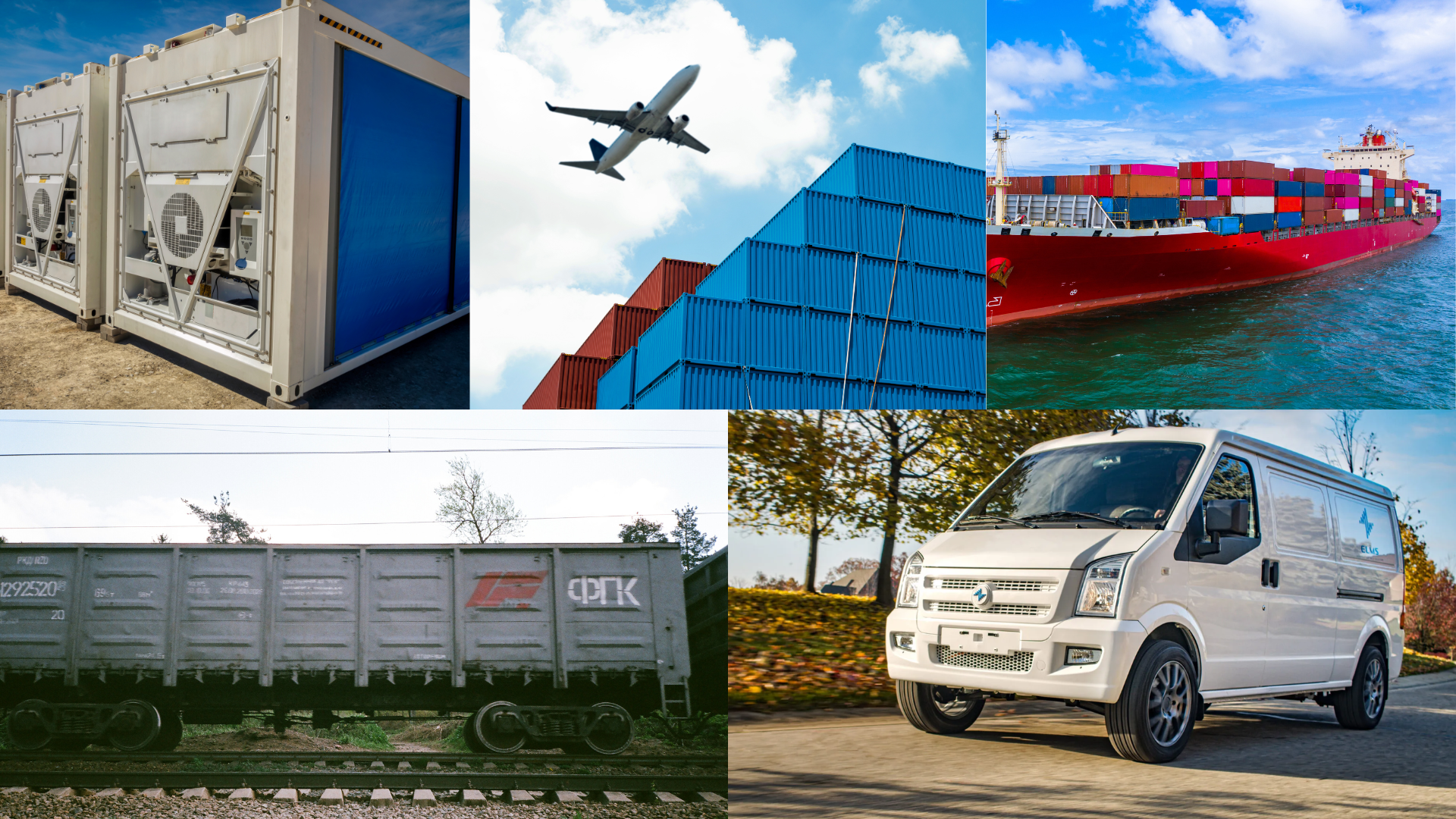
Moving temperature-sensitive goods requires the right transport methods to keep products safe.
- Refrigerated Trucks (Reefers): Used for road transport with built-in cooling systems.
- Air Freight: Fastest option for long distances, ideal for urgent or high-value goods.
- Ocean Reefers: Containers with cooling units for large shipments across seas.
- Rail Transport: Refrigerated railcars that carry bulk loads over long land routes.
- Last-Mile Vans: Smaller refrigerated vehicles for final delivery to customers.
Each mode has its strengths, and I believe the key is matching the right one to your product’s needs and timeline.
Cold Chain Logistics: Vendor & 3PL Selection Checklist
Choosing the right vendor or third-party logistics (3PL) partner is critical in cold chain logistics. The right partner ensures your products stay safe, compliant, and on time.
- Compliance and Certifications: Make sure they follow FSMA, GDP, IATA, or other required standards.
- Facilities and Equipment: Look for validated warehouses, calibrated reefer trucks, and reliable packaging solutions.
- Temperature Monitoring: 24/7 tracking systems with real-time alerts for excursions.
- Experience and Track Record: Proven history in handling sensitive goods like food or pharmaceuticals.
- Audit and Reports: Ability to share calibration logs, temperature records, and excursion reports.
A trusted vendor or 3PL partner can make all the difference in keeping your cold chain strong and dependable.
Conclusion
Cold chain logistics play a vital role in keeping food fresh, medicines safe, and many other products reliable. From storage and transport to monitoring and compliance, every step has to work together to protect quality.
I’ve seen how businesses that invest in the right packaging, technology, and skilled partners not only reduce waste but also build stronger customer trust.
For you, learning how cold chain logistics works can make it easier to plan smarter and stay competitive.
If you want practical tips on supply chain systems, refrigerated transport, and global shipping strategies, check out my other blogs for insights you can put to use right away.
